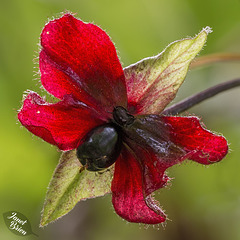Shooting information for this photo
← Back to the photo page
Want to know more about EXIF?
Check wikipedia page about Exchangeable image file format (EXIF)
Check wikipedia page about Exchangeable image file format (EXIF)
Some of EXIF data are only available in English.
| Camera: | Canon EOS 5D Mark III |
|---|---|
| Exposure: | 0.00625 sec. (1/160) |
| Aperture: | f/8.0 |
| Focal Length: | 100.0 mm (35 mm equivalent: 478.0 mm) |
| Flash: | Off, Did not fire |
| Exposure mode: | Aperture-priority AE |
| Max Aperture: | 2.8 |
| Resolution: | 300 x 300 dpi |
| Dimension: | 1024 x 1024 pixels |
| Original Date: | 2020:07:07 10:14:17.39 |
| Created on: | 2020:07:07 10:14:17 |
| Modified on: | 2020:07:10 15:15:50 |
| Software: | Adobe Photoshop CS6 Windows |
| Approximate Focus Distance | 0.55 |
| Body Serial Number | 072023000458 |
| Circle Of Confusion | 0.006 mm |
| Color Space | Uncalibrated |
| Date/Time Created | 2020:07:07 10:14:17 |
| Derived From Document ID | xmp.did:6FE57A9CEEC2EA11AEF3DB 143210F497 |
| Derived From Instance ID | xmp.iid:74E57A9CEEC2EA11AEF3DB 143210F497 |
| Derived From Original Document ID | 2DCAA833BBBCB54B3711E81A919599 97 |
| Description | Twinberry, also called bearberry honeysuckle, is in the honeysuckle family. Twinberries are very common in the Cape Lookout State Park at the base of Netarts Spit. Unlike their cousins, the climbing and pink honeysuckles which are twining vines and can occur in our area, the twinberry is an erect shrub that may grow to more than twelve feet high. Its paired yellow flowers each have a five-lobed, tubular corolla. The flowers are subtended by a pair of large, green bracts that turn red as the fruits mature into pairs of shiny black berries. These berries are bitter and considered inedible, but their juice has been used as a dye. Its leaves are opposite, they have petioles, and they are rather shiny on top. They drop off in the winter. There are two varieties of twinberries, the coastal Lonicera var. ledebourii, occurring in coastal Oregon and California, and the mountain Lonicera var. involucrata, found in all western and the lake states. From https://www.netartsbaytoday.or g/Yellowish_Flowers.html |
| Document Ancestors | xmp.did:291234fb-1249-f64b-8b2 c-e1b5c1bcc773, xmp.did:6FE57A9CEEC2EA11AEF3DB 143210F497 |
| Exif Version | 0220 |
| Exposure Compensation | 0 |
| Exposure Mode | Auto |
| Field Of View | 4.3 deg |
| Firmware | 1.3.3 |
| Flash Compensation | 0 |
| Focal Plane Resolution Unit | cm |
| Focal Plane X Resolution | 1600 |
| Focal Plane Y Resolution | 1600 |
| Format | image/jpeg |
| History Action | saved, saved, derived, saved, derived, saved, saved, saved, saved |
| History Changed | /metadata, /metadata, /, /, /, /metadata, /metadata |
| History Instance ID | xmp.iid:0bd5871d-8740-054c-973 a-57a0f8e56b31, xmp.iid:4bafd592-6ba4-c249-9e2 9-90f2233e4fda, xmp.iid:291234fb-1249-f64b-8b2 c-e1b5c1bcc773, xmp.iid:6FE57A9CEEC2EA11AEF3DB 143210F497, xmp.iid:74E57A9CEEC2EA11AEF3DB 143210F497, xmp.iid:4FE6CD97F1C2EA1183EDDB B9CBBCF438, xmp.iid:1abffd6c-2ef1-0743-929 d-ef12bdb88984 |
| History Parameters | converted from image/x-canon-cr2 to image/tiff, converted from image/tiff to application/vnd.adobe.photosho p |
| History Software Agent | Adobe Photoshop Camera Raw 9.1.1 (Windows), Adobe Photoshop Camera Raw 9.1.1 (Windows), Adobe Photoshop Camera Raw 9.1.1 (Windows), Adobe Photoshop CS6 (Windows), Adobe Photoshop CS6 (Windows), Adobe Photoshop Camera Raw 9.1, Adobe Photoshop Camera Raw 9.1.1 (Windows) |
| History When | 2020:07:10 14:09:04-07:00, 2020:07:10 14:09:07-07:00, 2020:07:10 14:11:05-07:00, 2020:07:10 15:00:20-07:00, 2020:07:10 15:15:14-07:00, 2020:07:10 15:17:04-07:00, 2020:07:10 15:26:42-07:00 |
| Hyperfocal Distance | 198.87 m |
| ISO | 640 |
| Image Description | Twinberry, also called bearberry honeysuckle, is in the honeysuckle family. Twinberries are very common in the Cape Lookout State Park at the base of Netarts Spit. Unlike their cousins, the climbing and pink honeysuckles which are twining vines and can occur in our area, the twinberry is an erect shrub that may grow to more than twelve feet high. Its paired yellow flowers each have a five-lobed, tubular corolla. The flowers are subtended by a pair of large, green bracts that turn red as the fruits mature into pairs of shiny black berries. These berries are bitter and considered inedible, but their juice has been used as a dye. Its leaves are opposite, they have petioles, and they are rather shiny on top. They drop off in the winter. There are two varieties of twinberries, the coastal Lonicera var. ledebourii, occurring in coastal Oregon and California, and the mountain Lonicera var. involucrata, found in all western and the lake states. From https://www.netartsbaytoday.or g/Yellowish_Flowers.html |
| Image Number | 0 |
| Image Size | 1024x1024 |
| Lens | EF100mm f/2.8L Macro IS USM |
| Lens ID | Canon EF 100mm f/2.8L Macro IS USM |
| Lens Info | 100mm f/? |
| Lens Model | EF100mm f/2.8L Macro IS USM |
| Lens Specification | 100, 100, undef, undef |
| Light Value | 10.6 |
| Metadata Date | 2020:07:10 15:26:42-07:00 |
| Metering Mode | Center-weighted average |
| Original Document ID | 2DCAA833BBBCB54B3711E81A919599 97 |
| Photographic Sensitivity | 640 |
| Rating | 5 |
| Resolution Unit | inches |
| Scale Factor To 35 mm Equivalent | 4.8 |
| Scene Capture Type | Standard |
| Sub Sec Time Original | 39 |
| Subject | bearberry honeysuckle, honeysuckle, Lonicera involucrata, Twinberry |
| White Balance | Auto |
| XMP Toolkit | Adobe XMP Core 5.6-c011 79.156380, 2014/05/21-23:38:37 |
Jump to top
- ipernity © 2007-2024
- Help & Contact
|
Club news
|
About ipernity
|
History |
ipernity Club & Prices |
Guide of good conduct
Donate | Group guidelines | Privacy policy | Terms of use | Statutes | In memoria -
Facebook
Twitter
